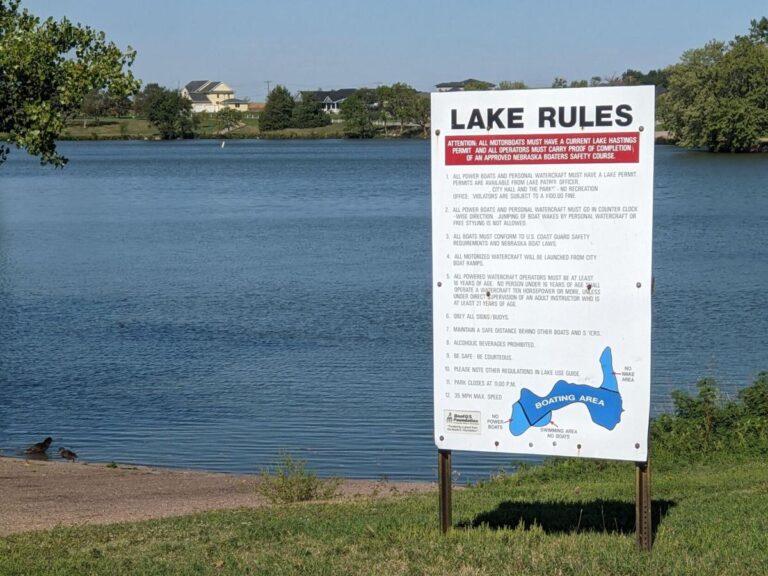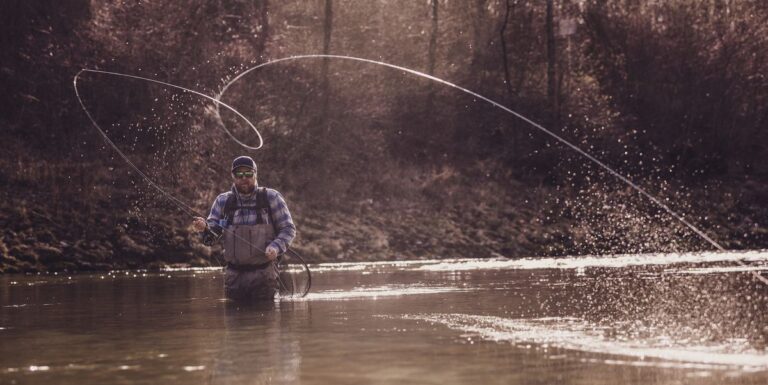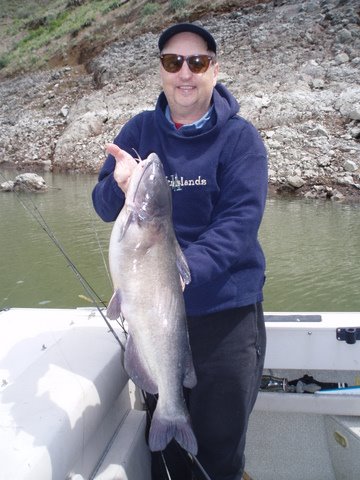To locate prime fishing spots in lakes, use a depth finder to locate drop-offs and underwater structures. Then, look for areas with features that attract fish, such as weed beds and points.
The art of finding the perfect fishing spot depends upon the type of water body and the specific fish species you are targeting. The challenge becomes harder with the vastness of lakes. Every angler dreams of catching a trophy fish, but to make that happen, you have to find where they are hiding.
That’s why locating prime fishing spots within lakes is a crucial task for anglers. With the right techniques and tools in hand, you can turn any trip into a productive fishing excursion. In this article, we will explore the best ways to locate prime fishing spots in different types of lakes.

Credit: www.wired2fish.com
Understanding The Basics Of Lake Fishing
What Makes Lake Fishing Different From Other Types Of Fishing
Lake fishing is a unique type of fishing that requires different strategies and techniques than other fishing styles. Below are key points that make lake fishing stand out:
- Lakes are larger bodies of water that require more extensive coverage to locate fish.
- The water in lakes is often calmer and less turbulent than rivers or streams.
- Lakes have varying depths, which can significantly affect the behavior of fish and their preferred habitats.
The Types Of Fish Found In Lakes
Lakes host a wide range of fish species, each with its unique characteristics and behavior. Below are some of the common types of fish you can expect to find when fishing in a lake:
- Bass, including largemouth, smallmouth, and spotted bass.
- Trout, including rainbow, brown, brook, and lake trout.
- Walleye, which are typically found in deeper and colder waters.
- Pike, which are known for their aggressive behavior and size.
- Panfish, including bluegill, crappie, and perch, are smaller fishes that can be easier to catch.
The Different Habitats Of Fish And How They Affect Fishing Techniques
Fish habitats are the physical and environmental conditions in which fish live and thrive. Understanding the different habitats of fish can help guide your fishing techniques. Below are the different habitats of fish in lakes and how they affect fishing techniques:
- Shallows: Shallow waters are less than 10 feet deep and are ideal for bass, panfish, and trout. Topwater lures, crankbaits, and spinnerbaits work well in shallow waters.
- Drop-offs: Drop-offs are sudden changes in depth and are ideal for walleye, pike, and trout. Trolling, jigging, and deep-diving crankbaits are effective techniques in drop-offs.
- Weed beds: Weed beds are areas with abundant vegetation and are ideal for bass, panfish, and pike. Weedless lures and jigs are effective in weed beds.
- Structures: Structures are man-made or natural objects in the water and are ideal for all types of fish. Fishing around structures requires specialized techniques like flipping, pitching, and skipping.
The Role Of Weather And Season In Lake Fishing
Weather and season significantly affect fish behavior, and understanding these factors can vastly improve your success in lake fishing. Below are the roles of weather and season in lake fishing:
- Spring: In spring, fish tend to be more active as the water temperature gradually warms up. During this time, fish tend to move toward shallow waters to spawn.
- Summer: In summer, fish tend to move toward deeper and cooler waters as the temperature increases. Early morning and late evening are the ideal times to catch fish in the summer.
- Fall: In fall, as water temperatures start to drop again, fish tend to move towards shallower waters to feed. Fishing in shallower waters with lures that imitate baitfish can be effective in catching fish.
- Winter: In winter, fish tend to move toward deeper and warmer waters or become less active and move into slow-motion mode. Ice fishing is a popular technique for catching fish in the winter.
By understanding the basics of lake fishing, you can improve your chances of landing a big catch. Keep in mind that patience, practice, and persistence are crucial to becoming a successful lake angler.
Finding Prime Fishing Spots In Lakes
Locating Prime Fishing Spots In Lakes
Fishing in a lake can be a challenging task, especially if you are unaware of the prime fishing spots. A prime fishing spot in a lake is where the fish congregate, and the species you intend to catch is more likely to bite.
In this blog post, we’ll discuss different ways to identify prime fishing spots in a lake.
The Importance Of Lake Topography In Fishing
Lake topography plays a critical role in identifying where fish are most likely to be located. Certain lake topographies, such as drop-offs, humps, and ledges, provide excellent cover for fish. When fish are not actively feeding, they often retreat to these structures to rest and hide.
Understanding the lake’s topography is key to identifying prime fishing spots.
How To Use Technology To Locate Fish In Lakes
Advancements in technology have made it easier to locate fish in lakes. One of the most commonly used technologies is a fish finder. It is a device that uses sonar to detect underwater objects, including fish. With this device, you can quickly locate schools of fish and identify their depth and size.
Reading Water Currents, Temperatures And How They Affect Fish
Water currents and temperatures play a critical role in identifying prime fishing spots in a lake. Fish tend to concentrate in areas where there is a change in water temperature or current. Warm water tends to rise, creating a flow that fish use when moving from one spot to another.
In contrast, cold water tends to sink, meaning fish will likely reside in deeper areas. By understanding water currents and temperatures, you can identify the prime fishing spots in a lake.
Tips And Tricks For Identifying Prime Fishing Spots In A Lake
Identifying prime fishing spots in a lake requires a bit of expertise and experience. Here are some tried-and-tested tips and tricks to help you locate a prime fishing spot:
- Look for structure: Fish like to hang around structures such as fallen trees, submerged rocks, and weed beds.
- Check out the shoreline: Focus on areas where the shoreline changes, such as points, bays, and inlets.
- Observe the wildlife: Wildlife such as birds and insects can indicate the presence of fish in the area.
- Time of day matters: Fish are more active during certain times of the day, such as early morning and late afternoon.
- Choose the right bait: Use bait that is specific to the species of fish you intend to catch.
Identifying prime fishing spots in a lake requires a bit of expertise and experience, but by understanding the lake’s topography, using technology, observing water currents and temperatures, and using the tips and tricks above, you’ll be able to increase your chances of landing a big catch.
Conclusion
After reading this article, you should now know what it takes to locate prime fishing spots in lakes. By following the guidelines outlined, you can increase your chances of catching more fish on your next trip to the lake. Remember, it is crucial to research the lake’s topography, water temperature, fish species, and vegetation before heading out on the water.
Using technology, such as fish finders and gps devices, can also be helpful in pinpointing the best spots to fish. Above all, patience and perseverance are key when it comes to fishing. Keep trying different techniques and locations until you find the sweet spot.
With these tips in mind, go out and enjoy the thrill of catching fish in some of the best prime fishing spots in lakes. Happy fishing!






